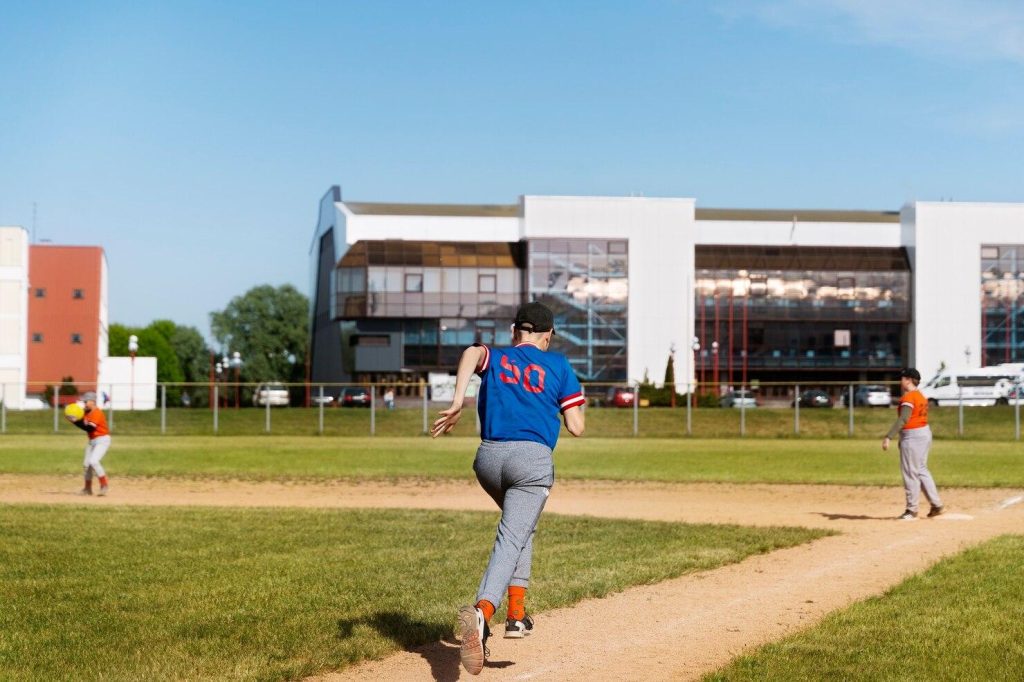In stadiums that were once the setting for weekend rivalries and intramural bragging rights, something greater is unfolding. University sports — long treated as an afterthought to campus life — are becoming talent factories in earnest. Across the globe, and even more so in South Asia, universities are no longer merely centers of learning. They’re incubators for the national athletes of tomorrow.
The change is both cultural and practical. As sports governing bodies seek new methods of identifying and nurturing talent earlier, campuses are responding with facilities, competition, and exposure. Students aren’t merely pursuing degrees anymore — some are pursuing national jerseys.
Universities as Contemporary Scouting Grounds
What used to be amiable inter-university battles, are now organized, high-stakes competitions. Events such as the World University Games, National University Championships, and regional college leagues are serious business these days. In certain nations, success at these levels is not only a résumé enhancer — it’s a direct feed into national selection trials.
This change has been brought about by a succession of modest yet significant changes. Facilities have become better. Coaching is professional now. And, above all, federations are taking notice.
Actually, in this digital era of limited attention spans, even the neighboring industries are taking notice and sitting up to take heed of the increasing hum of university sports. For instance, sites that used to offer online entertainment — such as those featuring live casino online real money — have begun incorporating university-level sports content as part of their strategies to build an audience. Mid-paragraph, this crossover indicates an increasing trend in which competitive student sports aren’t merely campus news; they’re now part of the broader entertainment and cultural discourse.
All this movement is attracting scouts, media organizations, and companies to campus competitions. And players are noticing — training harder, playing smarter, and embracing the fact that their path to the big leagues might very well begin in a lecture hall.
Why National Teams Are Turning to Universities
University leagues present national federations with something not many places can provide: pre-formed sets of highly dedicated players already in an existing system. Such players are likely to be aged 18-25 — the vital development age for developing physical fitness and technical skills.
There are advantages beyond age, though. Here’s why national selectors are increasingly looking towards universities as pools of potential top players:
| Advantage | Description | Impact on National Teams |
| Built-in Infrastructure | Universities often have gyms, fields, courts, and trainers | Reduces cost and effort of building from scratch |
| Education-Athletics Mix | Athletes grow both mentally and physically | Creates more disciplined and strategic players |
| Year-Round Competition | Regular tournaments maintain form and match readiness | Easier to assess consistency and adaptability |
| Geographic Diversity | Students come from all corners of the country | Expands the talent net beyond traditional urban powerhouses |
This model also accommodates longevity among athletes. The ones who fail to reach the pinnacle still have a degree and a career. That twin-track option is particularly attractive in the Third World, where Third World sporting careers are more at risk.
In India, Bangladesh, and other countries with emerging sports cultures, this policy is paying bountiful dividends. National governments are dispatching scouts to finals fought on campus. Campus leagues are on the radio and television. And students no longer have to make a choice between study and sport — they can do both, and no more.
Real-World Success Stories and Local Momentum
The proof is not theoretical only. In a number of sports disciplines, such as basketball, volleyball, and even cricket, university players currently are on national and professional levels.
Consider India’s kabaddi university culture, for example, that has goaded Pro Kabaddi League franchises. Or Kenya, where university runners can consistently produce the best sportspersons. Even Bangladesh, where university football and athletics program outputs are now starting to show up in national team camps.

Propelling this enthusiasm is institutional and individual impetus. Academy programs that commit money to coaching, training, and competition schedules are seeing the returns — medals and national team selections alike.
The impact is gaining momentum. When that one university player is selected or drafted, the message is sent: it can be done. That message spreads quickly to students, motivating others to engage in serious training and compete more forcefully.
Constructing a Stronger Bridge from Campus to Country
For university sports to be a real launch pad for national teams, several strategic bridges still need to be constructed. National federations, higher education authorities, and sponsors all have parts to play.
Let’s work it out:
- More Talent Scouts at University Tournaments: Federations need to treat top-level campus tournaments as top-priority scouting events.
- Scholarship and Incentive Programs: Funding will assist in lightening the financial burden on student-athletes balancing books and training.
- Dedicated Athlete Pipelines: Establish a continuum of university leagues and national development camps.
- Media Awareness and Social Engagement: Raising the profile of university sportspeople through highlight reels, interviews, and campus news will drive public interest.
Universities themselves have to make the commitment. That is, they have to hire licensed trainers, improve gyms, and give their athletic programs more than secondary status. If a university is able to create great researchers, it can create great athletes.
And just as sports entertainment complexes redirected their focus from stadium activity to web viewers, so can universities create their own worlds of content — broadcasting games, profiling athletes, and reveling in the path from dorm room to the national jersey.
A New Era of Campus Champions
University athletics is no longer an amateur recreation, study recess, or social function. It’s becoming an accepted path to professional competition and national fame. With sound design and intent, student-athletes can progress — not in spite of their university years, but because of them.
And with increasingly more federations putting emphasis on performance at the campus level, the bleachers are likely to be the front row for identifying tomorrow’s stars.



